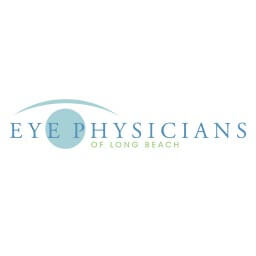Blog post by: Eye Physicians of Long Beach

Recent studies have suggested a potential link between the popular diabetes and weight loss medication, semaglutide—sold under the brand names Ozempic and Wegovy—and a rare eye condition known as non-arteritic anterior ischemic optic neuropathy (NAION). NAION is a serious condition that affects the optic nerve and can lead to sudden, irreversible vision loss. However, it is important to understand that while an association has been observed, more research is needed to confirm a direct causal link between semaglutide and NAION.
What is NAION?
NAION is characterized by a reduction or blockage of blood flow to the optic nerve, which can result in sudden vision loss. Often described as a “stroke of the optic nerve,” NAION is the second most common optic nerve disease in the United States, affecting up to 10 out of 100,000 people. Unfortunately, there is no known treatment for NAION, making it one of the most common causes of sudden blindness.
The Study Findings
The recent study published in JAMA Ophthalmology analyzed medical records from over 16,800 patients in the Boston area, focusing on around 1,700 individuals who had diabetes, were overweight, or had obesity. The researchers found that patients who were prescribed semaglutide had a higher incidence of developing NAION compared to those who were not taking the drug. Specifically, in the diabetes group, 17 out of 200 patients on semaglutide developed NAION, a rate four times higher than those not on the medication. In the obesity group, 20 out of 361 patients on semaglutide developed the condition, a rate seven times higher.
Expert Opinions
Despite these findings, experts urge caution in interpreting the results. Dr. Joseph Rizzo, the senior study author, emphasizes that the study shows an association rather than proving causation. A large, randomized controlled clinical trial is necessary to confirm whether semaglutide directly causes NAION. Similarly, Dr. Andrew Lee, a neuro-ophthalmologist at Houston Methodist Hospital, notes that while some patients on semaglutide have developed NAION, it remains unclear whether the drug is the cause or if the association is coincidental.
Risk Factors and Precautions
It is important to recognize that individuals with Type 2 diabetes, sleep apnea, and hypertension—conditions commonly associated with obesity—are already at an increased risk for vision problems, including NAION. Additionally, diabetic retinopathy, another serious eye condition, is a leading cause of blindness in adults with diabetes.
Current Recommendations
Given the current evidence, patients taking Ozempic or Wegovy should not be alarmed but should remain informed. Dr. Shauna Levy, an obesity medicine specialist, mentions that the findings will not change her prescribing practices, as the overall risk remains low. However, patients who have existing visual loss or are concerned about their risk of developing NAION should discuss these findings with their healthcare provider. It’s crucial to weigh the benefits of semaglutide in managing diabetes and weight loss against the potential risks.
In summary, while the association between semaglutide and NAION warrants further investigation, patients should consult their doctors to make informed decisions about their treatment options. Ongoing research will help clarify the relationship and ensure patient safety.
